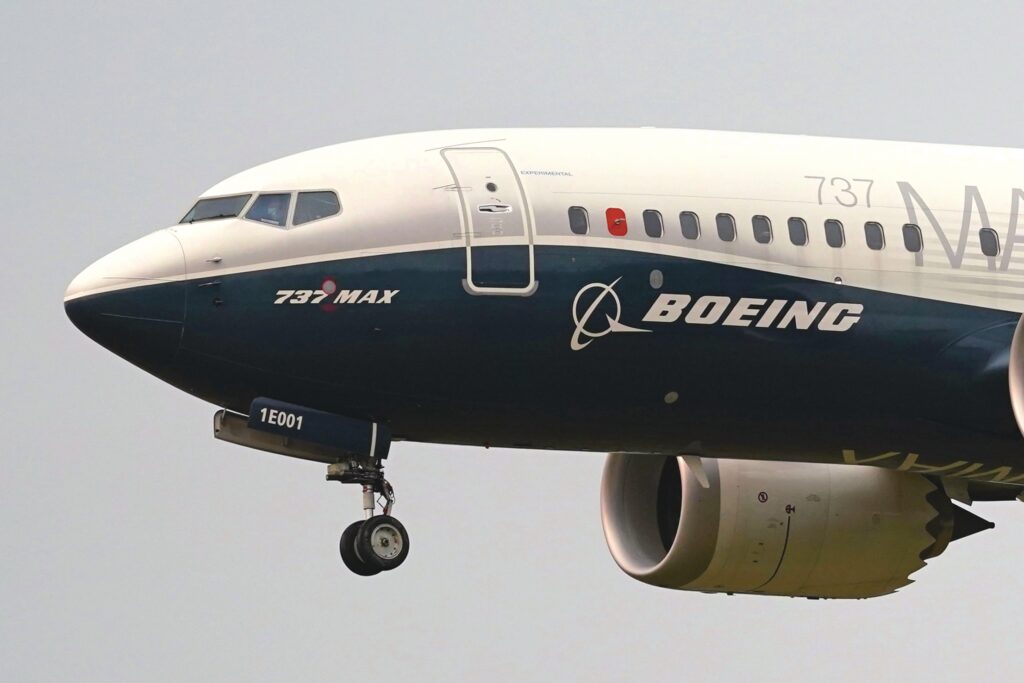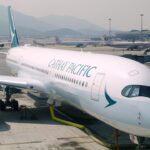Boeing CEO Dave Calhoun faces a multibillion-dollar dilemma over how to rebuild company sales and restore the business of the largest US exporter back to normal track, industry insiders say. Boeing is reeling from a safety scandal following crashes of its 737 MAX airliner and an air travel collapse caused by the coronavirus pandemic.
Boeing’s share of the single-aisle jetliner market – where it competes in a global duopoly with Airbus – has faded from some 50 percent a decade ago to roughly 35 percent now after the 737 MAX’s lengthy grounding.
And, Airbus’ single-aisle A321neo has snapped up billions of dollars of orders from Boeing.
Without a perfectly timed new addition to its portfolio, analysts warn the US risks ceding to Europe a huge portion of the airplane market – valued at some $3.5 trillion over 20 years.
But Boeing is not yet ready to settle on a plan to develop a new plane to compete with A321neo, and two leading options – press ahead now or wait until later – come with financial and strategic risks, several people briefed on the discussions said.
“I’m confident that over a longer period of time, we’ll get back to where we need to get to and I’m confident in the product line,” Calhoun said in April as Boeing won new MAX orders.
Asked about the company’s discussions and options over a potential new airplane, a Boeing spokesman said it had no immediate comment beyond Calhoun’s remarks.
Options
A weakened Boeing has little margin for error, especially as it tackles industrial problems hobbling the airliners, analysts say.
Boeing’s first option is to do it quickly, bringing to market in 2029 a 5,000-mile single-aisle jetliner with some 10 percent more fuel efficiency. That could potentially be launched for orders in 2023.
“There is no better way to fix their image than invest in the future now, pure and simple,” said Teal Group analyst Richard Aboulafia.
A new single-aisle jet would replace the out-of-production 757 and fill a void between the MAX and larger 787, confirming a twist to earlier mid-market plans as reported by Reuters in April last year. The idea took a backseat early in the pandemic, before regaining attention.
It would also be an anchor for an eventual clean-sheet replacement of the 737 family.
An alternative option is to wait for the next leap in engine technology, not expected until the early 2030s. That could involve open-rotor engines with visible blades using a mixture of traditional turbines and electric propulsion.
Wary of letting short-term product decisions drive strategy, Boeing is prioritizing a deeper dive into investments or business changes needed to regain the No.1 spot, analysts say.
Both approaches carry risks. If it moves too quickly, Boeing may face a relatively straightforward counter-move.
Airbus’ preference is do nothing and preserve the status quo, European sources say. But it has for years harbored studies codenamed “A321neo-plus-plus” or “A321 Ultimate” with more seats and composite wings for the market.
Such an upgrade might cost Airbus some $2-3 billion, but far less than the $15 billion Boeing would spend on making a new plane.
For Boeing, a premature tit-for-tat move runs the risk of merely replicating the strategic spot it finds itself in now.
If it moves too slowly, however, investors may have to bear a decade of perilously low market share in the single-aisle plane category, which is the industry’s profit powerhouse.
As it weighs when to act, Boeing has sought initial technical data from engine makers Rolls-Royce, Pratt & Whitney and the General Electric-Safran tie-up CFM International, industry sources say.
A firm competition is not expected for a year or more, they add, a delay that illustrates Boeing’s bind. Rolls-Royce, which has most to gain as it tries to re-enter the lucrative single-aisle market, said last month it would be ready for any new product.
Watching Boeing’s decision from the sidelines is China, where state manufacturer COMAC is working on a C919 narrow-body in a potential challenge to the cash-cow 737 and A320 families.
Sitting on $7 billion in net cash and a second-mover’s advantage, analysts say Airbus appears most comfortable, though it also faces its share of industrial headaches.
Asked whether he thought Airbus’s expansion plans might provoke Boeing into launching a new plane, Airbus CEO Guillaume Faury played down the prospect of a new industry arms race.
“If they trust the MAX with the pent-up demand they see for single-aisle then I don’t see why they would be in a hurry to replace the MAX. If they are in a different situation they might come to other conclusions,” Faury said.
A Boeing 737 Max jet Photo: IC




